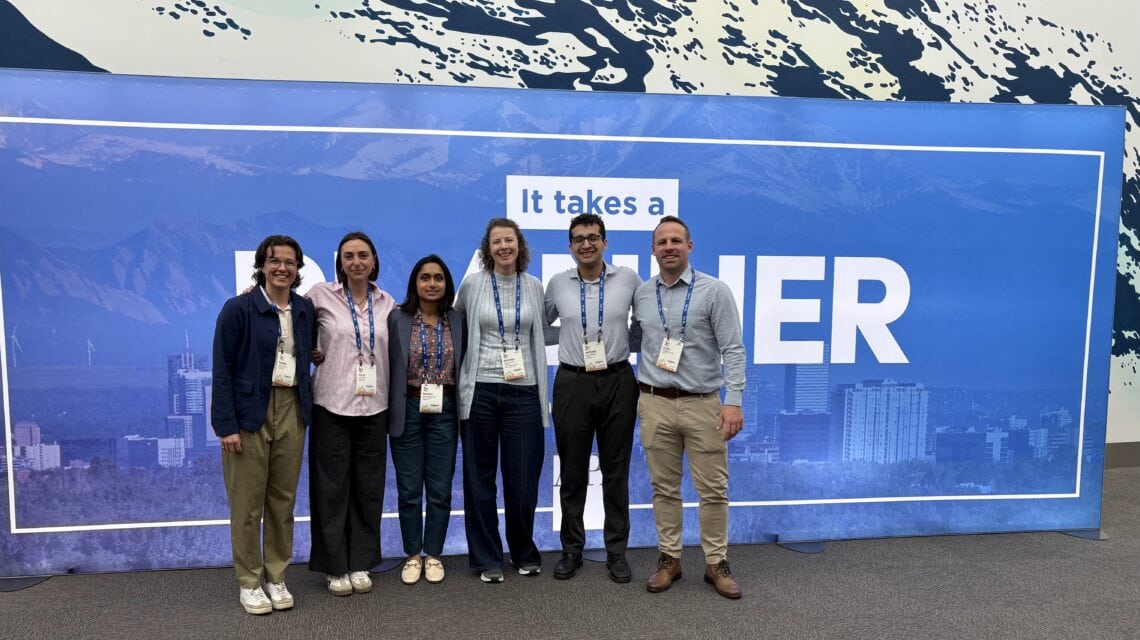SPA Representatives Reflections on the National Planning Conference

“Attending my first National Planning Conference was a great experience! I had the opportunity to attend some informative presentations, including “The 15-Minute City: Myths and Mods for Suburbia” by Allison Stewart Harris (GPA), “Can Your Zoning Hack It?” by Christy Dodson (GPA), and “Not (Officially) in My Backyard: Unpermitted ADUs” by Derek Ouyang. GT School of City and Regional Planning also had a strong presence, with Daniel Hunsaker, Jeremiah LaDuca, and Tyler Carnahan leading a session on pedestrian-infrastructure planning and mobility.
Another interesting session I attended was the Student Planning and Design Competition, featuring teams from UT Austin, Harvard, and Wisconsin. Their presentations were impressive, showcasing strong planning and design skills. Hopefully, next year we will see some representation from Georgia!
Beyond the sessions, the exhibition hall had some unexpected highlights—like dogs and pickleball! The student area provided a good opportunity to meet peers from other universities. Comparing their projects to what we are working on at Georgia Tech gave useful insight into different approaches to planning education.
Meeting other GPA members was valuable. It was great to connect with people doing work in and around the planning field and to start recognizing familiar faces in the planning community. Finally, I took some time to explore Denver, with the public library and museum standing out as personal highlights. Overall, NPC was a great experience, and I look forward to attending again.”
— Niamh O’Dea, Georgia Tech School of City and Regional Planning
Vice President, Student Planning Association
“I really enjoyed attending NPC 25 not only for the camaraderie with fellow planners but to more fully understand best practices and trending movements in the field. One of the highlights, for me, was hearing about the vital importance of open green space in our cities.
As the US’s loneliness epidemic craves more opportunities for organic connection, planners attempt to create more shared spaces for social engagement and cultural dynamism. I enjoyed hearing about success stories like Southwest Houston’s Burnett Bayland Park, which is not only known for its skate-friendly architecture and mini soccer pitches, but also for the anti-displacement policies baked into its plan. Closer to the conference, Gordon Robertson, Director of Planning Design and Construction at Denver Parks & Recreation, spoke about his department’s leveraging of data to create an equity index that determines high-need neighborhoods to “get kids to parks and off social media.” Finally, I was inspired by Jersey City Director of Infrastructure Barkha Patel’s work reimagining the intersection of Bergen Square, both strengthening its historic identity and reactivating it as a vibrant human-scale public space.
Patel asked an important question: “What else can a street cultivate if you think of it as a place?” This idea of turning pavement into parks is something that has followed me through the City & Regional Planning Master’s program at Georgia Tech, from organizing Park(ing) Day — literally turning parking spaces into mini parks for a day — to conceptual small-scale infill development plans centering around transit and trails. In a country with a housing shortage and a lack of affordability, it is all the more imperative to create incremental development around accessible pedestrianized open space — “one block at a time,” said Steven Lee of SWA. It was inspiring to hear so many speakers highlight key themes of sustainable placemaking at NPC 25. “
— Alex Kozela, Georgia Tech School of City and Regional Planning
President, Student Planning Association